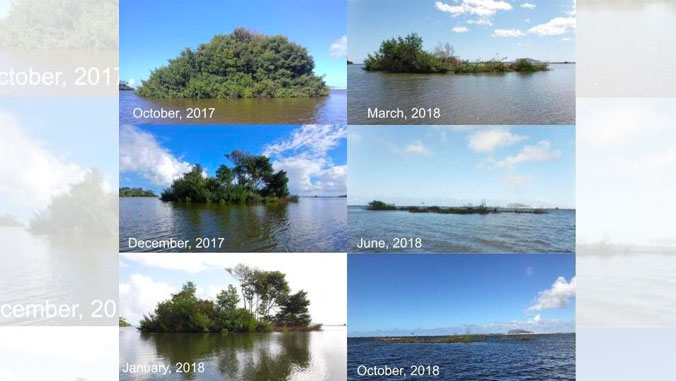
A project at Heʻeia Fishpond to remove an island of invasive red mangroves and replace them with native plant species has been completed, with studies showing that the fishpond’s ecosystem and water quality have improved dramatically.
The two-year project was led by the Sea Grant College Program at the University of Hawaiʻi at Mānoa and funded by the state Department of Health’s Clean Water Branch. The project focused on the complete removal of the invasive mangrove vegetation from the island that was more than 160 feet in diameter and 70 feet high.
The island of invasive red mangroves was initially formed during a massive May 1965 flood that blew out part of the fishpond wall.
Learning opportunity for grad students
In addition to improving the health of the fishpond, the project served as a learning opportunity for two UH Mānoa graduate fellows in the School of Ocean and Earth Science and Technology’s Department of Oceanography.
Paula Möhlenkamp and Aka Beebe focused their theses work on researching and monitoring water quality parameters and circulation within the fishpond.
“Heʻeia provides an excellent model of how we can learn from ancient Hawaiian practices to restore the environment and create a sustainable future for Hawaiʻi,” said Möhlenkamp, who recently published an article on her master’s work in the Journal of Sustainability. “This study showed us that restoration works, and what a positive impact we can have when coming together as a community to work toward the goal of maintaining and restoring this culturally and economically significant site.”
Project partners include Paepae O Heʻeia, Hui Kū Maoli Ola, Department of Oceanography faculty Rosie Alegado and Margaret McManus (Na Kilo Honua o Heʻeia).

Original article posted in the University of Hawaii News on Aug 6, 201
